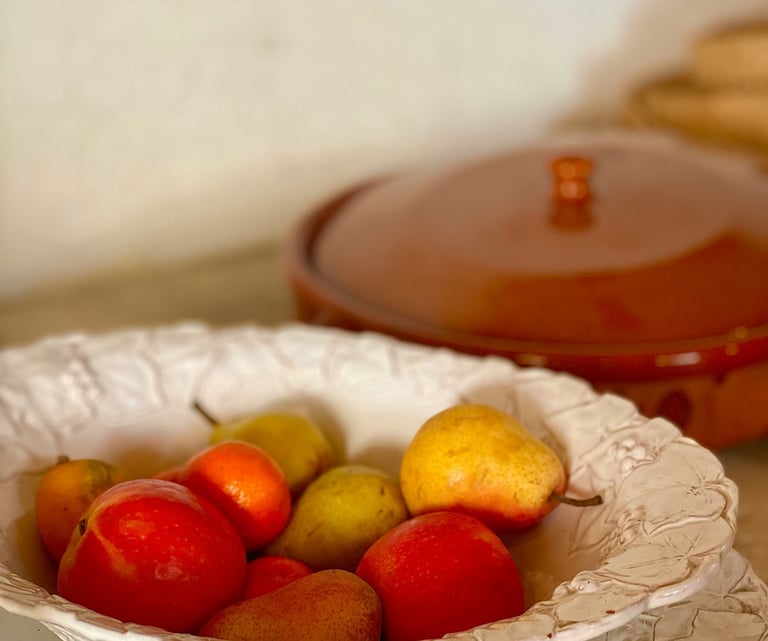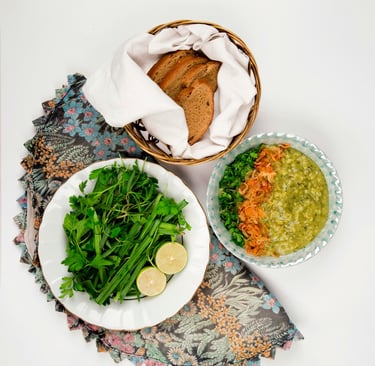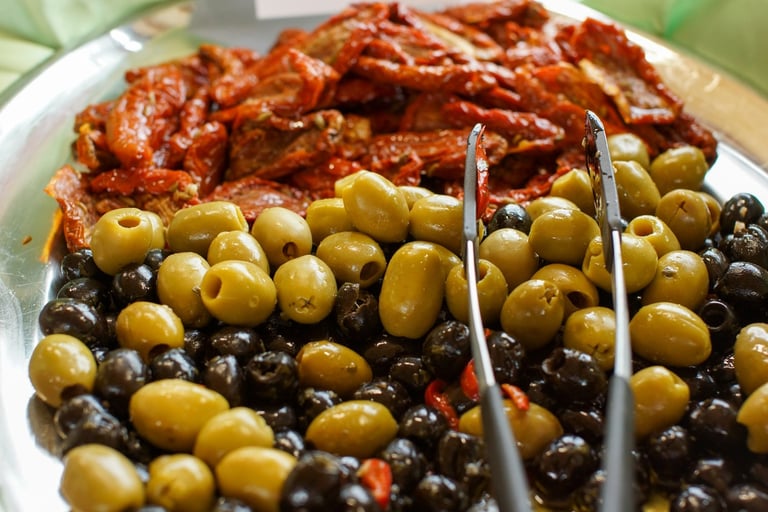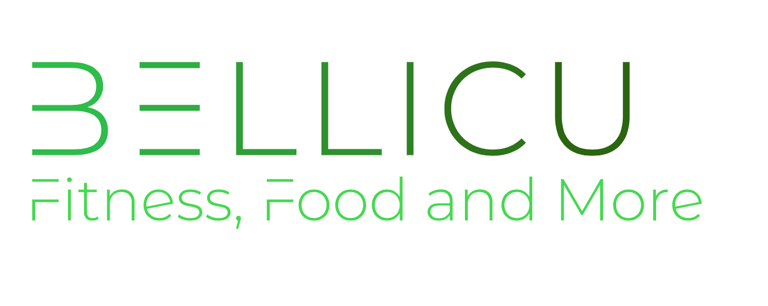Flexitarian Diet
A Sustainable and Balanced Way to Eat




A Tasty Introduction to Flexible Eating
Modern eating has become a battlefield of extremes—strict labels, food guilt, and all-or-nothing thinking. But what if there was a way to eat well, feel good, and live sustainably without giving up everything you enjoy?
That’s where the flexitarian diet comes in.
More of a mindset than a rigid plan, flexitarian eating encourages you to eat more of the good stuff—plants, whole grains, legumes—while leaving room for flexibility. It’s not about being perfect. It’s about being intentional. You can still enjoy a steak at a family barbecue or savor your favorite cheese—it just doesn’t need to be the foundation of every meal.
What sets this approach apart is how naturally it fits into real life. There's no "start date" or finish line. You can begin slowly, make small changes, and build a more balanced plate at your own pace. In a world that often demands extremes, this is a refreshingly practical way to improve your health, help the environment, and rediscover the joy of food.
Whether you're exploring more plant-based meals out of curiosity or you're looking for a way to nourish your body without rigid rules, the flexitarian diet might be the most realistic path toward long-term wellness.
What Is the Flexitarian Diet?
The flexitarian diet is a semi-vegetarian approach that prioritizes plant-based foods while still allowing for occasional consumption of meat, fish, and dairy. It’s a flexible eating style designed to help people transition toward healthier habits—without the pressure of strict dietary rules.
At its core, the flexitarian diet encourages:
Eating more plant-based foods such as fruits, vegetables, whole grains, legumes, nuts, and seeds
Reducing meat and animal product intake, especially red and processed meats
Choosing ethically sourced, high-quality animal products when included—think grass-fed beef, pasture-raised eggs, or wild-caught fish
Minimizing ultra-processed foods, added sugars, and artificial ingredients
Focusing on whole, nutrient-dense meals that nourish both your body and the planet
This way of eating is rooted in the idea that you don't have to go fully vegetarian or vegan to experience the health and environmental benefits of a plant-forward diet. Instead of eliminating food groups, the flexitarian diet adds more variety and nutrition by shifting the spotlight to plants.
Why Is It Called "Flexitarian"?
The term combines “flexible” and “vegetarian,” reflecting the adaptable nature of the diet. There are no strict rules or calorie counts to follow. You might eat entirely plant-based one day, include a little chicken the next, and enjoy seafood on the weekend. The goal is progress—not perfection.
Unlike restrictive diets, flexitarianism promotes gradual change over time. It meets people where they are, encouraging small, sustainable shifts that can lead to long-term health improvements and a more conscious relationship with food.
Whether you're a lifelong meat-eater looking to eat a little cleaner or a former vegetarian who wants more freedom, the flexitarian diet makes room for your preferences—while still guiding you toward healthier, more eco-friendly choices.
Flexitarian Diet vs. Other Diets


Flexitarianism is often compared to the Mediterranean diet, as both emphasize whole foods and minimal processing. But while Mediterranean eating leans on fish and olive oil, the flexitarian diet puts more emphasis on reducing animal intake overall.
Key Health Benefits of the Flexitarian Diet
Supports Heart Health
Studies have shown that plant-based diets can reduce LDL cholesterol and blood pressure—two major risk factors for cardiovascular disease. The flexitarian diet’s focus on fiber-rich foods like legumes, oats, and vegetables helps protect your heart.
Promotes Healthy Weight
Flexitarians often report easier weight maintenance or modest weight loss without extreme dieting. That’s thanks to the naturally lower calorie density of plant-based foods, which allow you to eat satisfying portions with fewer calories.
Improves Gut Health
Fiber is key for a healthy gut, and plant-based foods are packed with it. A diverse range of plant fibers supports a thriving microbiome, which is linked to immunity, mood, and metabolic health.
Reduces Risk of Type 2 Diabetes
Eating more plants—especially whole grains and legumes—can improve insulin sensitivity and reduce blood sugar spikes, helping to prevent or manage type 2 diabetes.
Environmentally Sustainable
By cutting down on meat consumption, even slightly, you reduce your carbon footprint. Livestock farming is a major contributor to greenhouse gas emissions, so going flexitarian can help the planet, too.
What Can You Eat on a Flexitarian Diet?
Here’s what a typical day of flexitarian eating might look like:
Breakfast
Oatmeal with almond milk, berries, chia seeds, and walnuts
Or avocado toast with a poached egg
Lunch
Lentil and quinoa salad with leafy greens and tahini dressing
Or a veggie-loaded wrap with hummus
Dinner
Stir-fried tofu with brown rice and broccoli
Or grilled salmon with roasted sweet potatoes and asparagus
Snacks
Apple slices with peanut butter
Greek yogurt with flaxseed and cinnamon
Edamame or roasted chickpeas
It’s all about flexibility. You might go fully plant-based for five days, then enjoy a roast chicken dinner on the weekend. That’s the beauty of the flexitarian lifestyle—it bends, not breaks.
How to Start a Flexitarian Diet (Beginner Tips)
The beauty of the flexitarian diet is that it doesn’t demand an overnight transformation. You can ease into it at your own pace—and still see meaningful benefits. Here are some fun, practical tips to help you get started:
Embrace “Meatless Mondays” (or any day!)
Start simple: pick one day a week to go entirely plant-based. “Meatless Mondays” is a popular choice, but any day works. Use it as a chance to explore new recipes—like lentil shepherd’s pie, veggie stir-fries, or a vibrant Buddha bowl. Before you know it, you’ll be looking forward to your plant-powered days.
Flip the Script: Make Plants the Main Event
In traditional Western meals, meat often takes center stage. Flip that script. Let colorful veggies, hearty legumes, and whole grains shine. Think: roasted cauliflower tacos, chickpea curry, or stuffed zucchini boats. When plants are the stars, you won’t feel like anything’s missing.
Swap, Don’t Subtract
You don’t have to give up your favorite meals—just tweak them. Try lentils instead of ground beef in chili, or swap shredded chicken for jackfruit in tacos. Craving a burger? Try a black bean or mushroom-based version. Small, intentional swaps can make a big difference.
Prioritize Plant Proteins
Protein isn’t just about meat. Stock your pantry with protein-rich plant staples like beans, lentils, quinoa, tofu, tempeh, chia seeds, and nuts. With a little planning, you’ll hit your protein needs without relying heavily on animal products.
Progress Over Perfection
The flexitarian mindset is all about balance—not being perfect. If you enjoy a steak at a family BBQ or crave sushi on a Friday night, that’s okay. Every plant-based meal you eat is a win for your health and the planet. No guilt required.
Flexitarian Meal Planning Tips
One of the best ways to make the flexitarian diet work for you is to plan ahead. A little preparation can go a long way toward making plant-forward meals easy, affordable, and exciting. Here’s how to stay on track without the stress:
Batch Cook Grains and Legumes
Cooking big batches of grains like quinoa, brown rice, or farro—and protein-packed legumes like lentils, chickpeas, or black beans—saves time during the week. Store them in airtight containers in the fridge and mix and match them into salads, wraps, stir-fries, or bowls. They're incredibly versatile and make weekday meals a breeze.
Pro Tip: Cook legumes in vegetable broth and season them lightly for extra flavor straight from the fridge.
Keep a Well-Stocked Pantry
Your pantry is your flexitarian toolkit. Load it up with staples like:
Canned beans (chickpeas, black beans, kidney beans)
Whole grains (brown rice, oats, bulgur, millet)
Pasta (try legume-based varieties for a protein boost)
Spices (cumin, turmeric, smoked paprika, garlic powder, curry)
Nut butters, seeds, and unsalted nuts
With the right ingredients on hand, you’ll always be just a few steps away from a wholesome, satisfying meal—even on busy nights.
Use Theme Nights to Stay Creative
Give your weekly menu structure and fun with themed nights. It takes the guesswork out of "what's for dinner?" and encourages variety:
Taco Tuesdays – Try black bean tacos with avocado and salsa
Stir-Fry Thursdays – Load up tofu or tempeh with veggies and tamari sauce
Soup Sundays – Think lentil stew, minestrone, or Thai coconut soup
Themes make meal planning easier and more enjoyable—and help you build a repertoire of go-to plant-based meals.
Lean Into Seasonal Produce
Eating seasonally means better taste, better nutrition, and often better prices. For example:
Spring: asparagus, peas, strawberries
Summer: zucchini, tomatoes, berries, corn
Fall: sweet potatoes, squash, apples
Winter: kale, citrus fruits, root vegetables
Build your meals around what’s fresh and abundant in your region, and your dishes will naturally be more vibrant and nutrient-dense.
Get Inspired by Global Cuisines
Many traditional cuisines around the world are naturally plant-forward, offering endless inspiration for delicious flexitarian meals:
Mediterranean: hummus, falafel, tabbouleh, grilled vegetables
Indian: lentil dal, vegetable curry, chana masala
Thai: tofu pad Thai, green papaya salad, coconut curries
Middle Eastern: baba ghanoush, mujaddara, stuffed grape leaves
These global flavors prove that eating mostly plants is anything but boring—and they make it easier to enjoy meat-free meals without missing the meat.
Are There Any Downsides?
The flexitarian diet is widely praised for its balance and long-term sustainability, but like any dietary shift, there are a few things to be mindful of—especially if you’re moving significantly away from animal products. Here’s what to watch for:
Protein Intake
If you’re cutting back on meat, make sure you’re still getting enough high-quality protein from other sources. Fortunately, the plant world is full of excellent options—lentils, beans, tofu, tempeh, quinoa, and nuts all offer solid amounts of protein.
Additionally, plant-based protein powders can be a convenient way to support your protein goals. Many of today’s formulas—made from peas, rice, hemp, soy, or blends—deliver complete amino acid profiles and boast excellent macros. Some are even comparable to whey protein in terms of biological value and digestibility. They’re especially useful for athletes, active individuals, or anyone with increased protein needs.
Iron & Vitamin B12
Iron from plant sources (non-heme iron) is not absorbed as efficiently as the heme iron found in animal products. You can boost absorption by pairing iron-rich foods like lentils, spinach, and fortified cereals with vitamin C-rich items like citrus fruits or bell peppers.
Vitamin B12, on the other hand, is mostly found in animal products. Flexitarians who eat minimal meat and dairy should consider B12-fortified foods (like plant milks or breakfast cereals) or take a supplement to avoid deficiency over time.
Over-Reliance on Processed Meat Substitutes
While meat alternatives can make the transition easier, some products are high in sodium, oils, and additives. Use them sparingly, and aim to base your meals on whole food sources like legumes, grains, and vegetables for optimal health.
Is the Flexitarian Diet Right for You?
If you're looking for an eating style that supports your health goals without forcing you into an all-or-nothing mindset, the flexitarian diet might be your perfect match.
This flexible approach is ideal for:
People who want to eat healthier without saying goodbye to the occasional burger or cheese plate
Families trying to cut grocery costs while still putting nutritious meals on the table
Active individuals and athletes seeking a sustainable, performance-friendly way to fuel their workouts
Anyone exhausted by diet culture—yo-yo plans, restrictive cleanses, or anything that involves cutting out joy
The flexitarian diet thrives on balance over extremes. It's not about denying yourself—it's about creating a lifestyle that naturally tilts toward plants while making space for flexibility. You’re not cutting things out… you’re crowding in the good stuff: fiber, antioxidants, healthy fats, and colorful meals that actually taste amazing.
Whether you're trying to eat more ethically, feel more energized, support your long-term health, or just make dinner easier and more delicious, the flexitarian way adapts to you—not the other way around.
Final Thoughts – Flexibility Is the Future of Eating
In a world overflowing with extremes—elimination diets, viral detoxes, and rigid food rules—the flexitarian diet stands out as a refreshing, realistic alternative. It’s not about chasing short-term results or punishing your body. It’s about building a lifestyle that nourishes you over time—physically, mentally, and even ethically.
This isn’t a cleanse. It’s not a 30-day reset. It’s a long-term, adaptable approach that celebrates progress over perfection. You don’t need to be 100% vegetarian or cut out every indulgence to reap the benefits. In fact, what makes this diet so powerful is exactly what makes it doable: its flexibility.
Want to start by swapping meat for lentils twice a week? Great. Craving a plant-packed stir-fry instead of takeout? Even better. Every small change adds up. The flexitarian path honors your preferences, your culture, your lifestyle—and it evolves with you.
Whether your goal is to eat more greens, boost your energy, reduce your carbon footprint, or simply enjoy food without guilt, the flexitarian diet can support it. It’s a gentle shift toward a more mindful plate—one that’s kinder to your body, your wallet, and the planet.
Because the future of eating isn’t rigid. It’s flexible, inclusive, and nourishing.
And that’s something we can all get behind.






